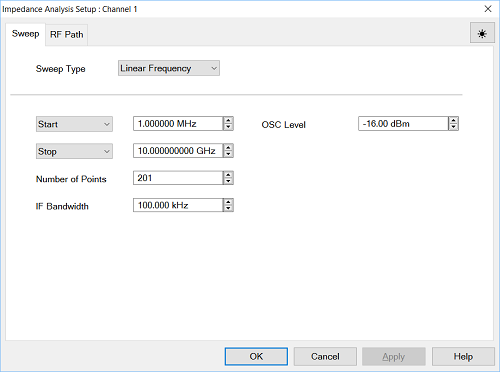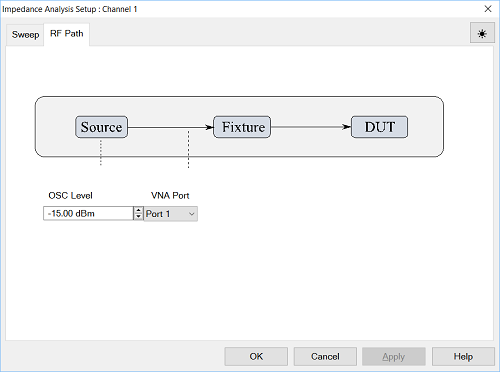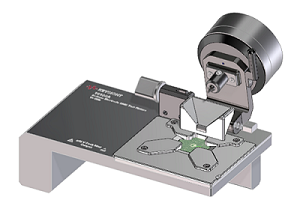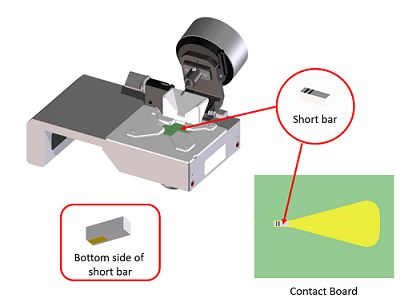
Import Cal from Choose
Cal Sets file from "..." if you have a Cal Set
with 85052DH02.
Check: The selected Cal Set file is used for S-Parameter
calibration. The selected calibration kit in S-Parameter
Calibration is ignored. If you set a STD Class Cal
Set (Cal Set was taken in STD class with 85052DH), only S-parameter
calibration can be skipped. Uncheck: Execute S-Parameter calibration and Fixture
Compensation from scratch.
Import Fixture Cal from
Check: The open/short fixture compensations are
also skipped. The fixture data file name and fixture standard
data are displayed and the open/short fixture compensations
data in the Cal Set file is used.
When you use a Cal Set file with ZA class, importing a Cal
Set file from Cal >
Cal Sets & Cal Kits
> Cal Sets.... is
the equivalent operation Uncheck: Retake a Fixture Compensation only. S-Parameter
calibration data is used from the selected Cal Set file. If
selected Cal Set file is STD class, this cannot be checked.
S-Parameter Calibration
Connector Only
3.5 mm can be selected for the19198A.
Cal Kit Select
the calibration data which you imported at Cal Kit diaglog box.
Cal Kit Gender Only
female can be selected for the 19198A.
Fixture Compensation
Fixture Data File Display
the imported fixture calibration data file. Import the fixture
calibration data file by clicking "...".
Fixture Standards
Define the values for open/short standard values. Open Conductance
(G), Open Capacitance (C), Shot Inductance (L) and Shot resistance
(R). See the procedure above for the 16198A.
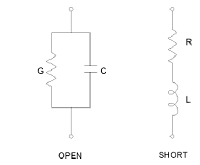
Next > is not activated
in the following conditions.
|
